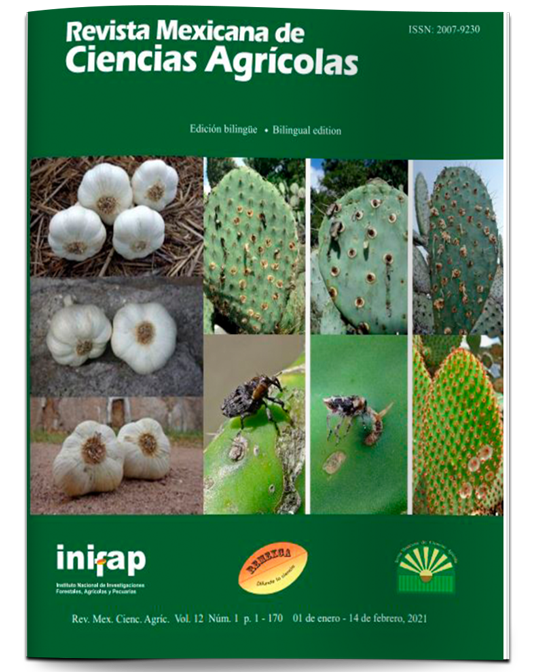Evaluation of substrates, nutrient solution and rooting agent in tomato seedling production
DOI:
https://doi.org/10.29312/remexca.v12i1.2450Keywords:
Lycopersicum esculentum Mill., seedling, seedling quality, tezontleAbstract
Obtaining high quality vegetable seedlings in seedlings allows producers to reduce the loss of seed, reduce the time to reach the optimum transplant height, minimize the loss of plants in soil or substrate and better adapt to the environment where the final transplant is performed. Producing seedlings in the best substrate and nutrition conditions increases the success of any crop. In most cases, imported substrates are used to produce seedlings in Mexico. For this reason, it is convenient to investigate alternatives of locally available substrates. The objective was to compare four substrates in two concentrations of the Steiner nutrient solution and a rooting agent in tomato seedlings (Lycopersicum esculentum Mill.) in the greenhouse. A factorial experiment with 16 repetitions was established in a completely randomized design. The variables were: days to emergence and appearance of the first true leaves, seedling height, stem thickness, number of leaves, fresh and dry weight of biomass and root. The results showed that the substrates that provided the best seedling quality characteristics were peat moss and tezontle, although there were no significant differences between 50% and 100%, to the nutrient solution, the concentration at 100% showed plants with higher quality and the rooting did not show a positive effect on the quality of the seedlings. Based on the above, the tezontle is recommended as a substrate to produce tomato seedlings because it is low cost, with a 100% Steiner nutrient solution, without applying a rooting agent.
Downloads
Published
How to Cite
Issue
Section
License
Copyright (c) 2021 Revista Mexicana de Ciencias Agrícolas

This work is licensed under a Creative Commons Attribution-NonCommercial 4.0 International License.
The authors who publish in Revista Mexicana de Ciencias Agrícolas accept the following conditions:
In accordance with copyright laws, Revista Mexicana de Ciencias Agrícolas recognizes and respects the authors’ moral right and ownership of property rights which will be transferred to the journal for dissemination in open access. Invariably, all the authors have to sign a letter of transfer of property rights and of originality of the article to Instituto Nacional de Investigaciones Forestales, Agrícolas y Pecuarias (INIFAP) [National Institute of Forestry, Agricultural and Livestock Research]. The author(s) must pay a fee for the reception of articles before proceeding to editorial review.
All the texts published by Revista Mexicana de Ciencias Agrícolas —with no exception— are distributed under a Creative Commons License Attribution-NonCommercial 4.0 International (CC BY-NC 4.0), which allows third parties to use the publication as long as the work’s authorship and its first publication in this journal are mentioned.
The author(s) can enter into independent and additional contractual agreements for the nonexclusive distribution of the version of the article published in Revista Mexicana de Ciencias Agrícolas (for example include it into an institutional repository or publish it in a book) as long as it is clearly and explicitly indicated that the work was published for the first time in Revista Mexicana de Ciencias Agrícolas.
For all the above, the authors shall send the Letter-transfer of Property Rights for the first publication duly filled in and signed by the author(s). This form must be sent as a PDF file to: revista_atm@yahoo.com.mx; cienciasagricola@inifap.gob.mx; remexca2017@gmail.
This work is licensed under a Creative Commons Attribution-Noncommercial 4.0 International license.



